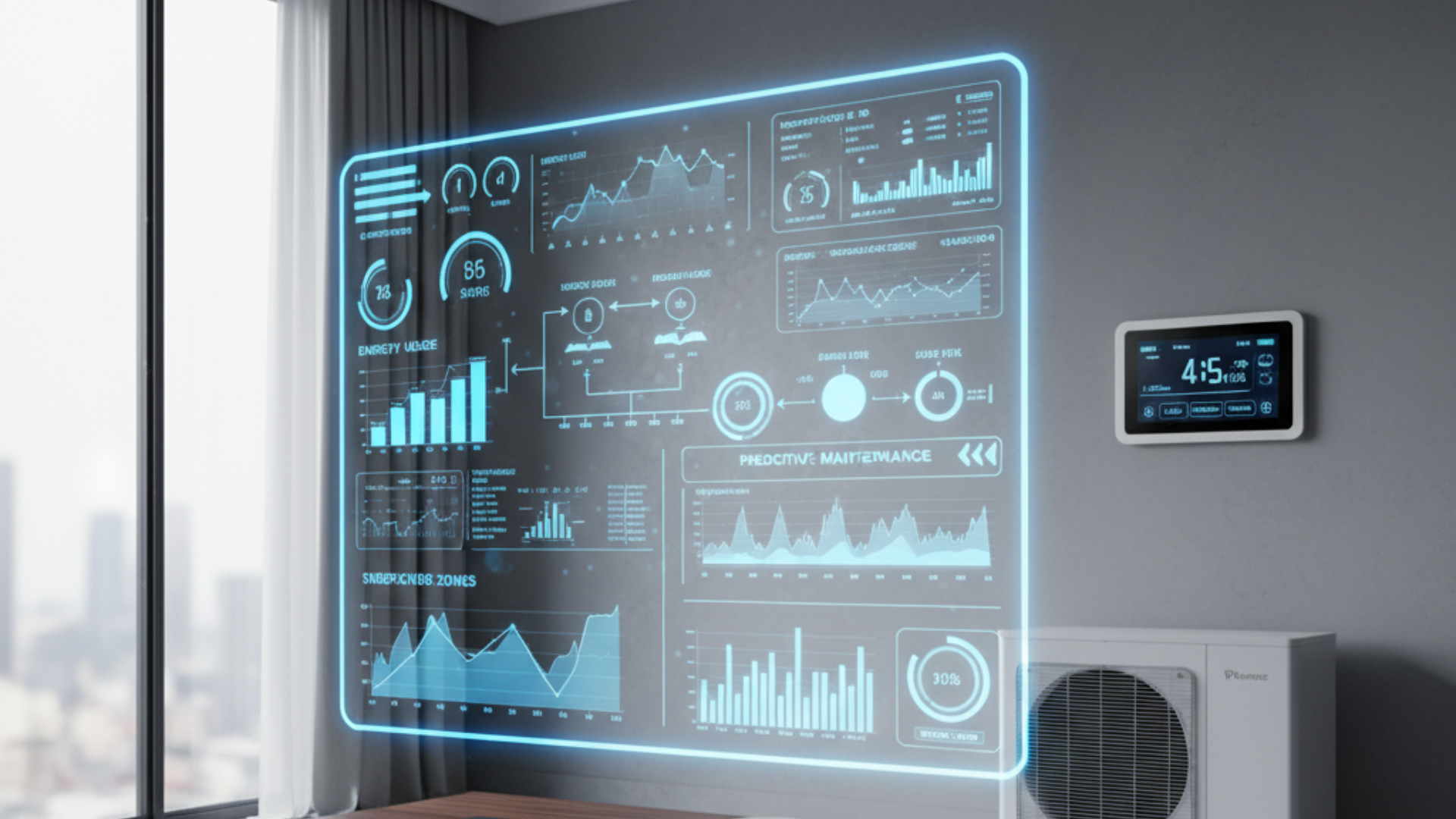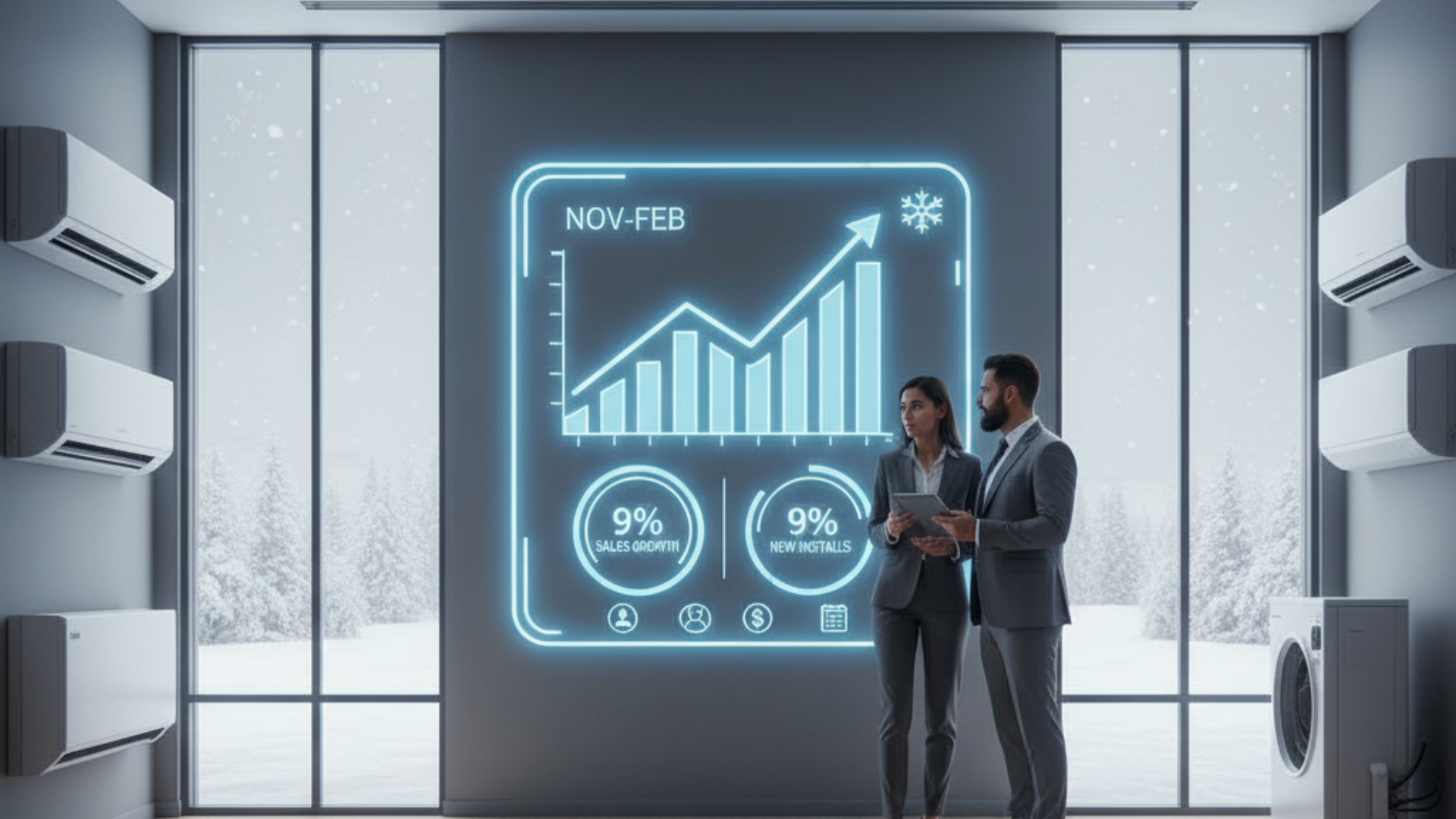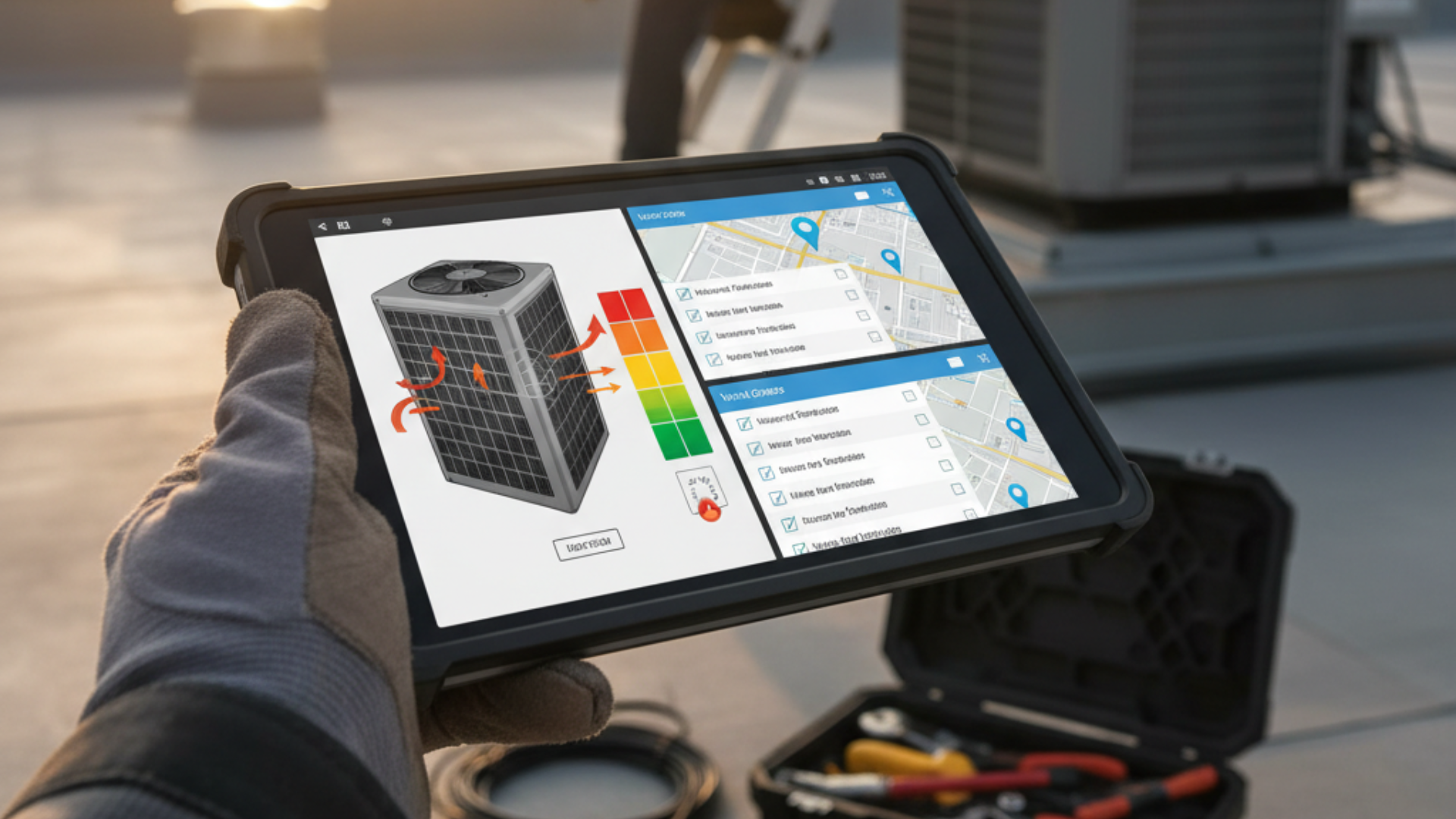Training the Next-Gen HVAC Technician: Tools to Attract Young Talent
The HVAC industry is grappling with a growing labor shortage, and every day, new technicians join the workforce.
However, many technicians start with entry-level skills that don’t meet industry standards. To succeed today, formal training and certifications, like EPA certification, are essential; simple online courses or a high school diploma aren’t enough.
So, how can HVAC technicians elevate their skills?
The answer is comprehensive HVAC training paired with the right tools. Platforms like HVACBase equip students with hands-on knowledge of system maintenance, air conditioning operations, and smart software use for estimation and project management, preparing them to excel in a competitive industry.
HVAC Workforce Training 101: Attracting and Retaining Young Techs
Modern HVAC technicians and workflow are the solution for labor shortage issues. The skilled workers are aging, and the new HVAC technicians are slow to maintain the speed and expertise level of HVAC professionals.
By using modern solutions such as VR simulations, gamification, and mobile access, it is possible to achieve better onboarding and reduce errors in HVAC technicians' work.
In this blog, we will study how HVAC workforce training helps you attract and retain young technicians.
Quick Insights:
- Modern HVAC workforce training is the solution for the labor shortage.
- The HVAC industry faces a growing labor shortage, making skilled technicians more critical than ever.
- Effective workforce training aligns learning with real-world HVAC operations, attracting and retaining the next generation.
- Interactive features like gamified dashboards and VR simulations help you onboard faster.
- HVACBase turns training into a growth ladder with the best HVAC features.
Why the HVAC Industry Struggles with Labor Shortages?
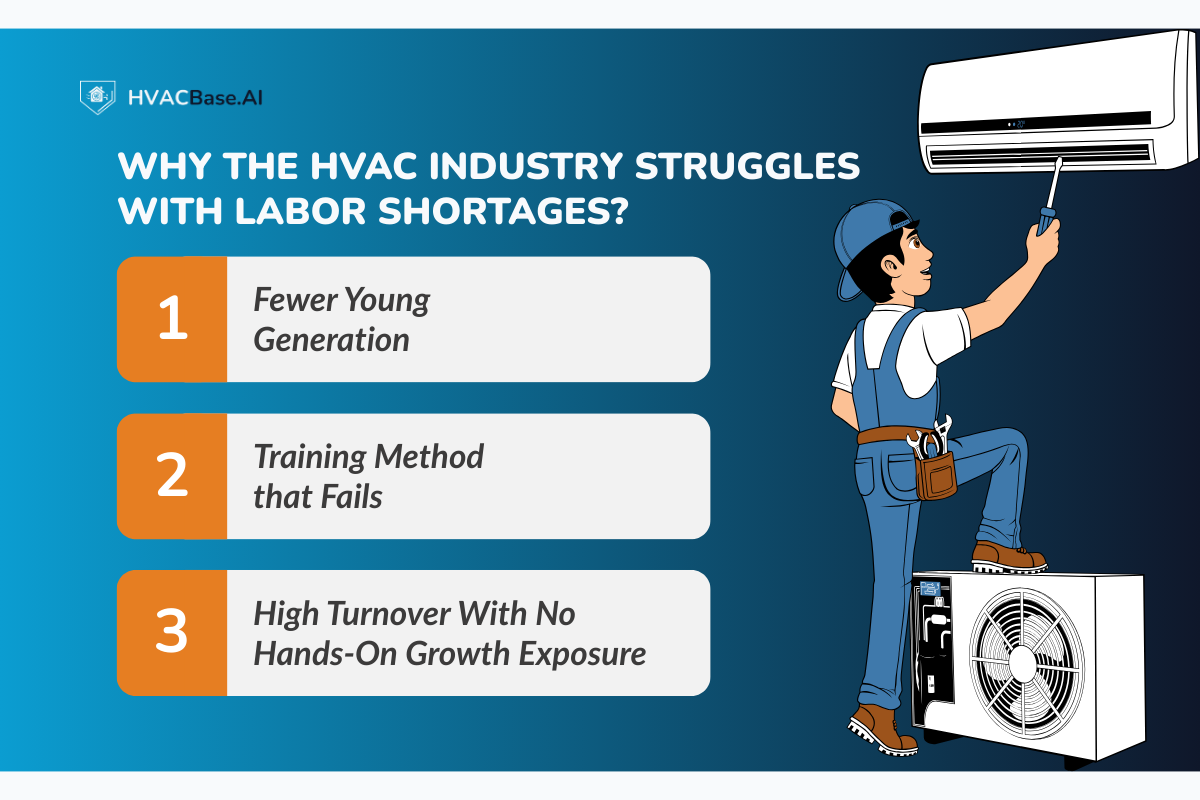
The labor shortage in the HVAC industry isn’t just about fewer applicants or salary concerns; there are deeper challenges at play. Let’s break them down:
A. Fewer Young Generation
Younger generations are less likely to see HVAC as a job outlook or a career with job security. Many want a top-earner position or a job with minimal troubleshooting.
B. Training Method that Fails
The traditional method is old school, like manual methods, or following the old steps of calculations set by senior technicians. This approach fails to engage new techs or leverage modern tools like HVAC software, smart cooling systems, and digital scheduling platforms.
C. High Turnover With No Hands-On Growth Exposure
Retention is a major hurdle for HVAC companies. Technicians are more likely to leave if they don’t see opportunities for practical growth, such as certification courses, hands-on training with HVAC systems, or guidance on commercial installations. Without these, even skilled workers may seek opportunities elsewhere.
What Is HVAC Workforce Training?
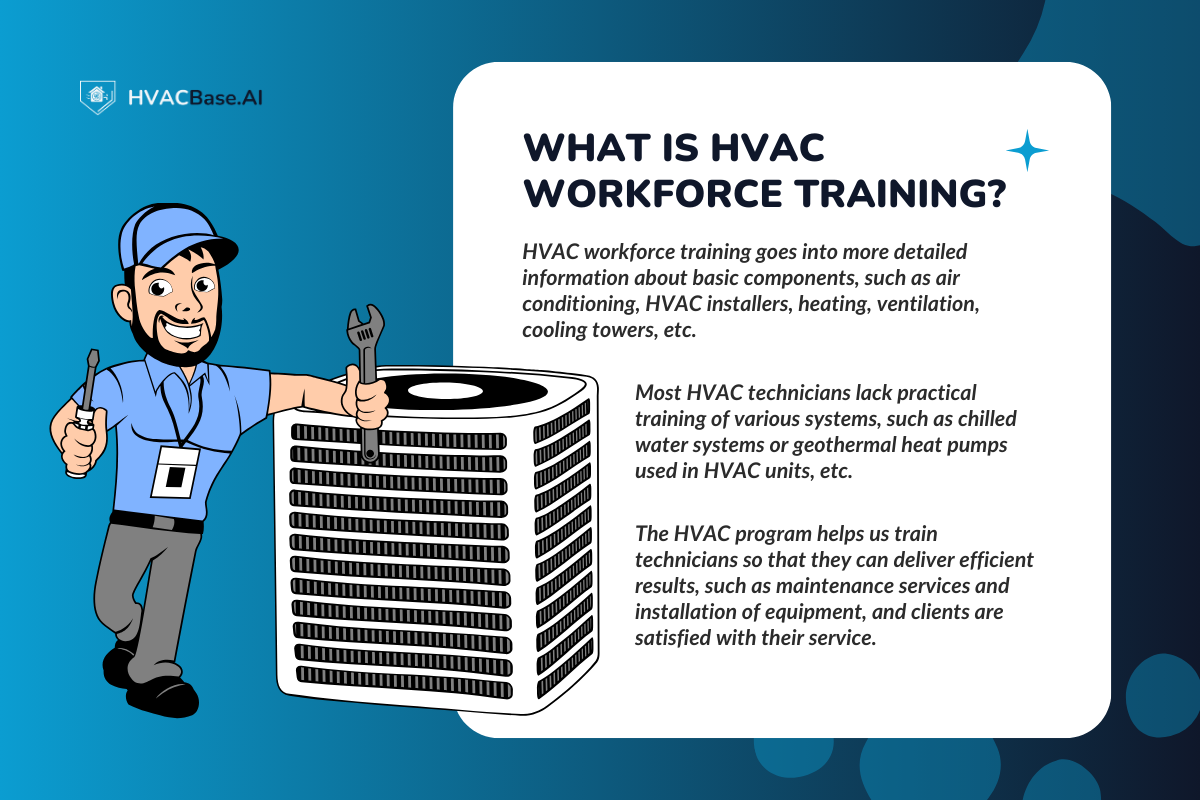
HVAC workforce training goes into more detailed information about basic components, such as air conditioning, HVAC installers, heating, ventilation, cooling towers, etc.
Most HVAC technicians lack practical training of various systems, such as chilled water systems or geothermal heat pumps used in HVAC units, etc.
A structured HVAC training program equips technicians with practical skills, enabling them to perform installations, maintenance, and troubleshooting efficiently, ensuring high-quality service and satisfied clients.
Did you know? Global demand for commercial air conditioning systems is expected to grow at a rate of 7.43% from 2025 to 2030.
Common Mistakes Companies Make with HVAC Training
Even with the best software and guides, many HVAC companies make these mistakes while training their technicians. Avoid these mistakes to get the most out of your workforce training:
I. Ignoring Tech-driven Learning
Today's generation has grown up with digital era apps and tools. Without interactive digital platforms, you cannot engage.
Traditional training methods alone fail to engage them effectively. Integrating tech-driven learning keeps trainees interested and accelerates skill acquisition.
II.Failing to Track Progress
Without tracking systems, it’s impossible to measure how much technicians are learning or improving. Therefore, you need software to track their progress in understanding the air conditioning and refrigeration cycle, or mastering heating system repairs, etc.
Building Competence: Modern Tools That Accelerate Onboarding
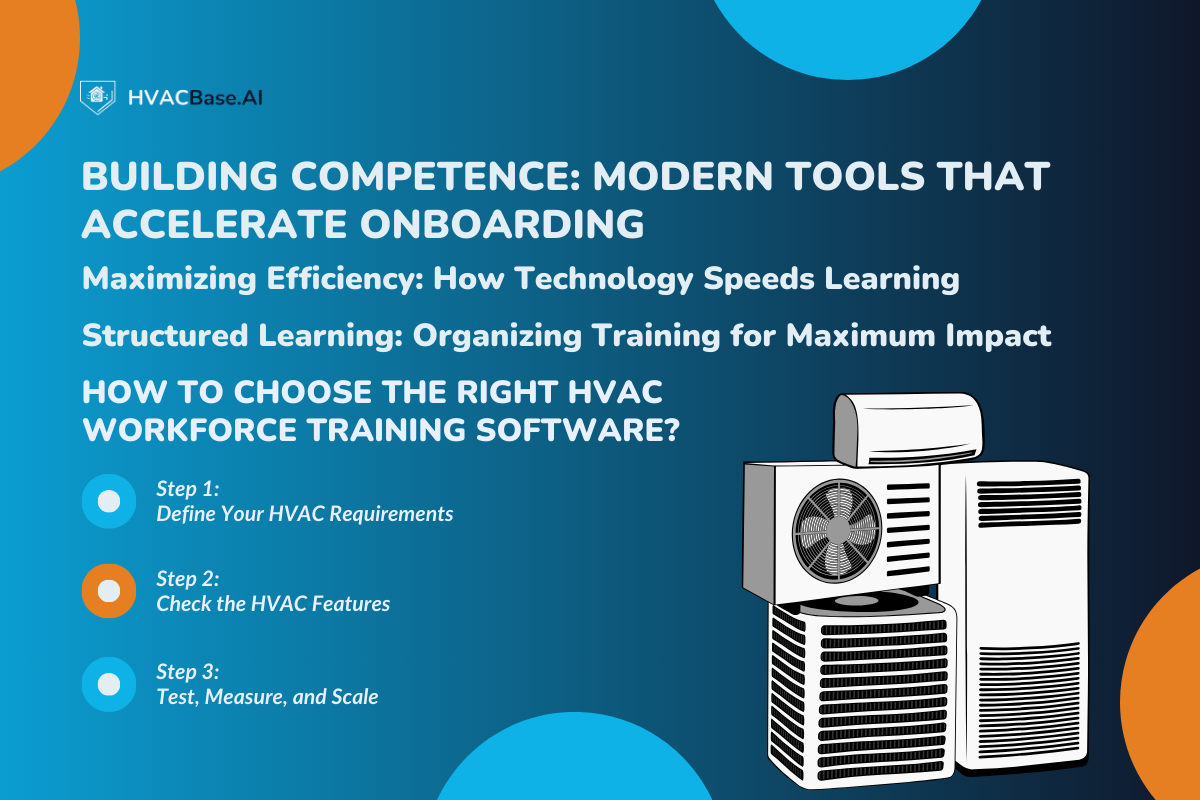
Classroom learning often gives you theoretical knowledge, leaving new technicians unprepared for real-world tasks. For example, when your reps complete education, they are sent to the field and are told to install a heating and air conditioning system, but they go blank and don't qualify for the practical demo.
How Technology Speeds Learning
This gap is compounded by speed and efficiency challenges. Many new HVAC technicians lack hands-on experience with real-world systems, causing slower service and increased dependence on managers for guidance.
Disorganized training adds another layer of inefficiency. Without a structured program, critical updates, project progress, and learning outcomes can get lost, leaving technicians unprepared and managers scrambling to fill gaps.
The solution? Modern tools bridge this gap by providing structured, hands-on training that prepares technicians to perform confidently on the job.
Here’s how these tools transform HVAC training:
Solutions that modernize the training of heating, ventilation, and air conditioning:
- Mobile Apps: With mobile access, training can be easy for new techs and students. It makes onboarding easy with set modules and interactive apps.
- Gamified Learning Dashboards: Gamification engages young technicians with points, badges, and leaderboards. This approach makes learning fun while motivating technicians to complete modules and master skills faster.
- Cloud-Based Collaboration: Technicians, trainers, and supervisors can collaborate in real time through cloud platforms. Updates, guides, and resources are instantly accessible to everyone, improving communication and reducing errors.
- Integrated Assessment Tools: Quizzes, scenario-based tests, and performance evaluations ensure that technicians retain knowledge and apply it correctly in real-world situations.
- VR Simulations: It helps create realistic visuals for technicians to do troubleshooting and installation of heating, air conditioning, and other tools without being on-site.
- Real Time Tracking: Dashboards help you track each and every learning with outcome in real time, keep on schedule, and track the productivity of techs.
Read: Why HVAC Businesses Need CRM Software.
Business Impact: How Certified HVAC Technicians Drive Success?
Skilled and certified workers not only work efficiently but also improve the credibility of your HVAC company. Investing in HVAC workforce training gives your business commendable benefits, such as:
1. Faster Service Completion
Technicians trained with hands-on tools like VR simulations and mobile learning modules develop real-world skills quickly. They handle service calls with speed and precision, completing tasks efficiently while minimizing errors.
2. Fewer Callbacks
Mistakes during the installation or maintenance of the air quality system, or during the inspection of the air conditioning system by mechanics, can lead to significant losses. But certified technicians consistently deliver first-time-right service, reducing callbacks and saving time and money.
3. Improved Customer Satisfaction
When clients see quick repairs and quick equipment fixtures, they trust you and your work. Certified and skilled technicians improve the company's reputation and client satisfaction.
Did you know? 75% of HVAC companies plan to invest in technician upskilling programs in 2025.
How to Choose the Right HVAC Workforce Training Software?
Generic training tools may not be effective for HVAC technicians and their specific workflow requirements. To achieve great industry results, an HVAC company needs the right HVAC software.
Step 1: Define Your HVAC Requirements
Before selecting software, identify your objectives clearly. Are you aiming for faster onboarding, fewer service callbacks, higher technician retention, or improved customer satisfaction?
Setting precise goals ensures the software you choose addresses your real business needs.
Step 2: Check the HVAC Features
Look for tools that go beyond basic training. The right software should include industry-specific features such as:
- VR Simulations for hands-on, risk-free practice
- Real-Time Tracking to monitor technician progress
- Gamified Dashboards to engage and motivate trainees
- Mobile Access for on-the-go learning
- Collaborative Cloud Platforms for seamless communication between trainers, supervisors, and techs
Step 3: Test, Measure, and Scale
Check and measure whether the chosen software helps you with your goals or not. See how it aligns with your business goals and HVAC requirements, and test how it works.
Read: The Future of HVAC: IoT, Smart Thermostats and More
Where HVACBase Fits In: HVAC Program Training Built for the Modern Technicians
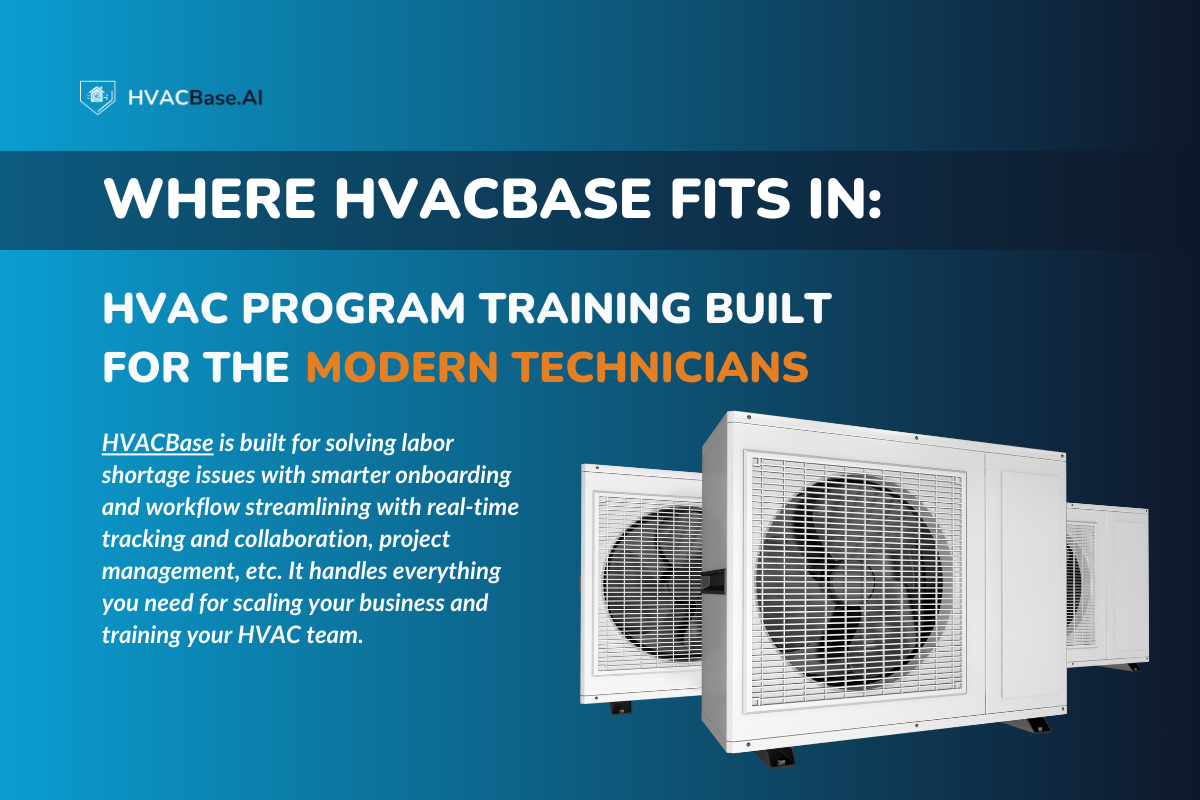
HVACBase is built for solving labor shortage issues with smarter onboarding and streamlining workflow with real-time tracking and collaboration, project management, etc. It handles everything you need for scaling your business and training your HVAC team.
With these features, HVACBase simplifies the training:
- Real Time Analytics: You can track techs as well as leads according to jobsite and live updates on work with dashboards.
- Mobile Technician App: You can access job details, service history, and inventory details from one place.
- Equipment Tracking: Track resources required for each job and client according to their specific needs.
- Communication Tools: It automates communication and reduces admin work.
- Sync with CRM, Proposals & Scheduling: Ensure seamless integration by syncing field updates back to the CRM, proposals, and job boards, eliminating the need for duplicate data entry.
- Drag-and-Drop Scheduling & Dispatching: Quickly assign jobs to nearby technicians and optimize daily routes to reduce drive time and increase job count.
- GPS Technician Tracking: Monitor the real-time location of field technicians, plan better routes, avoid overlap, and improve accountability.
Final Thoughts: Prepare Your HVAC Teams for the Future
Manual training is a slow process, and technicians might make human errors, which affects the overall workflow of operations.
Modern HVAC workflow training program aligns learning with real-world HVAC work requirements, which helps technicians grow.
By adopting modern tools such as VR simulations, real-time tracking, gamified dashboards, etc, you attract the young generation of technicians and prepare them to be skilled techs. Businesses that adopt these tools and work on younger generation tech retention practices can scale faster.
Ready to Train Your Next-Gen HVAC Workforce?
Stop losing productivity to slow onboarding and disengaged techs. Try HVACBase for immersive VR simulations, mobile learning, and gamified training that prepares your next-generation HVAC workforce.
Book a demo with HVACBase today.
FAQs
1. Is there a demand for HVAC techs?
Yes, there is demand for HVAC technicians as more HVAC systems are getting installed in homes or offices, and senior techs are retiring.
2. How do VR and mobile apps help in HVAC technician training?
VR and mobile apps make HVAC training more hands-on and flexible. VR enables technicians to practice real-world repairs, while mobile apps provide on-the-go lessons, quizzes, and manuals. Together, they make learning faster, safer, and more engaging for new technicians.
3. Which HVAC certifications make the most money?
Certifications often are costly, like professional courses, such as EPA [ Environmental Protection Agency ]certifications. Also, EPA 608 certification is legally required for refrigerators.
Have questions or need personalized advice?
Talk to an Expert Today and let our construction specialists guide you to success.

